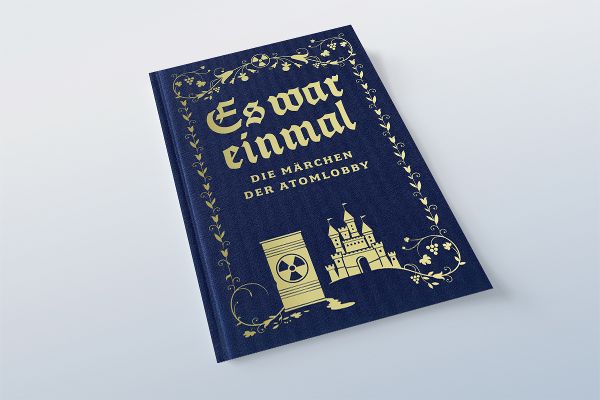Fairy tales by the nuclear lobby

Once upon a time …
The geopolitical framework and the energy policy environment have changed significantly with the Russian war of aggression. The war in Ukraine is a drastic reminder of the enormous potential danger posed by nuclear power plants in armed conflicts.
Paradoxically, various interest groups are now trying to propagate nuclear power as a solution to the crises triggered by the Russian war of aggression. In addition, more and more countries are focusing on nuclear energy as an option to achieve their long-term climate protection targets. Various countries want to massively expand nuclear power while asking for advantages and benefits and presenting nuclear power as environmentally and climate-friendly.
Hype concerning Small Modular Reactors (SMR)
The gap between political announcements and public perception on the one hand and reality on the other is widening more and more. This also applies to the hype concerning Small Modular Reactors (SMR).
At the 2023 World Climate Conference, several countries announced a tripling of nuclear power generation capacity by 2050. This is completely unrealistic or even not feasible due to the lack of industrial capacity, the low construction rates, the long lead and construction times and the high costs associated with the construction of nuclear power plants.
No “nuclear renaissance” in sight
It is a fact that the nuclear capacity has been steadily decreasing in recent years, while the share of renewables has risen strongly. Only China and Russia are building new reactors. The global production of nuclear energy peaked in 2006. One can by no means call this a “nuclear renaissance”, which is so often talked about.
While many reactors have reached the end of their planned lifetime, the nuclear sector appears to have a massive financing problem, at least in Europe.
It turns out that the industry itself is not prepared to bear the risks associated with nuclear power - and for good reason.
Future without fossil fuels and without nuclear power
Renewable energies from sun, wind, water and biomass are available as climate-friendly and affordable alternatives. The goal is to have 100 % green electricity in Austria by 2030. A future without fossil fuels and without nuclear power is possible.
Investments in renewable energies, storage technologies and energy efficiency are needed to advance a sustainable and lower-risk energy transition.
Fact checks on nuclear energy myths
We counter the promises made in the debate about nuclear power (fairy tales and myths) with fact-based information and have updated our fact checks and added new ones (Fact Check NEW).
Facts versus myths (updated and new fact checks)
The following fact sheets are also available in German!
- Fact Check new: Triple Pledge, Empty Promise? (PDF, 337 KB)
- Fact Check: Nuclear Power’s Share in Electricity Generation Continues to Fall (PDF, 149 KB)
- Fact Check: The Triumph of Renewable Energies (PDF, 205 KB)
- Fact Check: No Signs of a Nuclear Renaissance (PDF, 288 KB)
- Fact Check: New Nuclear Power and the Climate Emergency (PDF, 179 KB)
- Fact Check new: Nuclear Power and War (PDF, 114 KB)
- Fact Check: Nuclear Terrorism: “Most Immediate and Extreme Threat to Global Security” (PDF, 111 KB)
- Fact Check: The Power Plant and the Bomb – Nuclear Energy’s Siamese Twins (PDF, 116 KB)
- Fact Check new: Can nuclear power deliver security of supply and energy independence? (PDF, 127 KB)
- Fact Check new: Potential Nuclear Newcomer Countries (PDF, 120 KB)
- Fact Check: Small Modular Reactors – The Power of Promise (PDF, 137 KB)
- Fact Check new: Generation IV reactors (PDF, 104 KB)
- Fact Check: Renewables More Reliable Than Ageing Nuclear Power Plants? (PDF, 357 KB)
- Fact Check: Safety Implications of Lifetime Extensions (PDF, 261 KB)
- Fact Check: Cost Implications of Lifetime Extensions (PDF, 165 KB)
- Fact Check: Nuclear and Coal Phaseout – Can It Be Done? – The German Case (PDF, 144 KB)
- Fact Check new: Nuclear Economics and Finance (PDF, 258 KB)
- Fact Check: Nuclear Waste – An Intergenerational Issue (PDF, 105 KB)
- Fact Check: Fukushima – Not a Worst-Case Even (PDF, 248 KB)